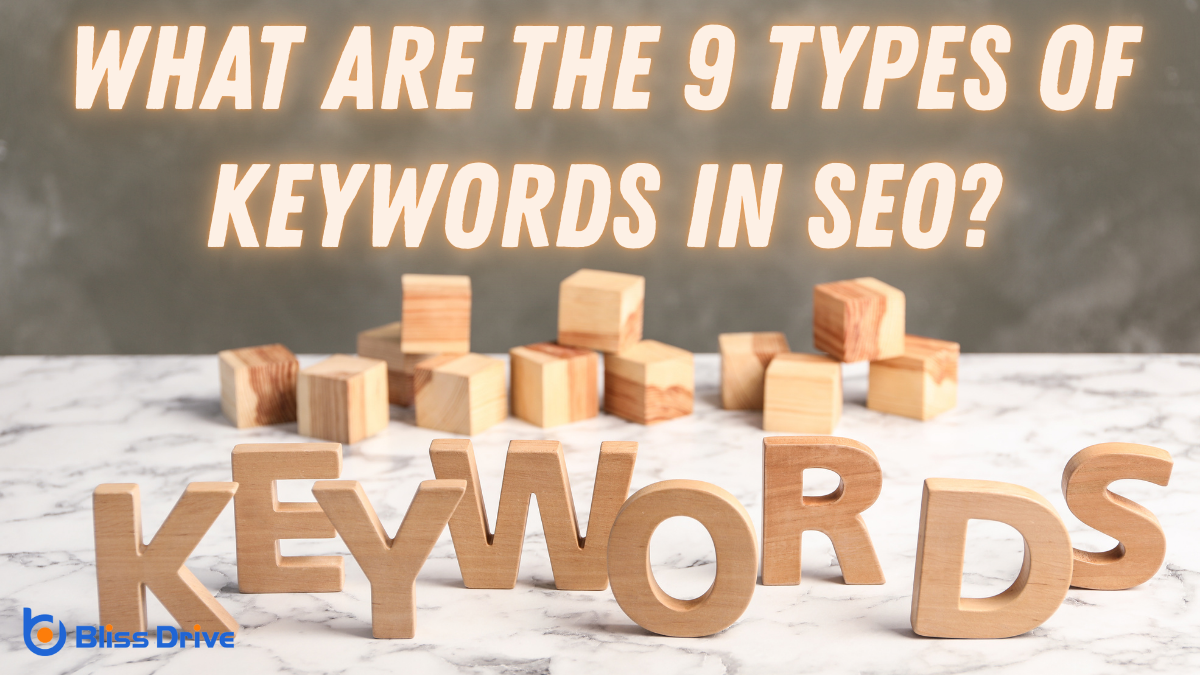Digital Marketing Services
Learn More About Us

In the world of SEO, we're often tasked with understanding the different types of keywordsWords or phrases that users type into search engines to find information. that can make or break a strategy. From short-tail to long-tail, and everything in between, each keyword type serves a unique purpose. They help us target the right audience, optimize content effectively, and ultimately, drive relevant traffic. But how do these keywords differ, and why are they so essential to our SEO efforts? Let's find out.
Short-tail keywords, often referred to as "head terms," are typically one to two words long and cover broad topics. When choosing these keywords, we aim to capture high search volume due to their general nature. However, they come with fierce competition, making it challenging to rank higher in search results.
We should consider that short-tail keywords are vital for driving traffic when we want to reach a wide audience. They help us understand user intent at a basic level, guiding us in creating relevant content.
Despite their challenges, these keywords can boost brand visibility and attract potential customers to our site. Balancing them with other types of keywords is essential for a well-rounded SEO strategy.
Let's use them wisely to enhance our online presence.

Long-tail keywords play an essential role in refining our SEO strategy by targeting more specific search queries. These keywords usually consist of three or more words and are less competitive than broad, short-tail options.
By focusing on long-tail keywords, we can attract highly targeted traffic, which often leads to higher conversionThe completion of a desired action by a referred user, such as making a purchase or filling out a fo... rates. Here’s why we should embrace them:
While long-tail keywords help us target specific queries, exact match keywords enable us to focus on highly precise search terms.
These keywords are vital when we want to capture users with a clear intent, who know exactly what they're searching for. By using exact match keywords, we can better align our content with these searchers’ needs, potentially increasing the likelihood of engagementThe interactions that users have with a brand’s content on social media..
In practice, exact match keywords mean our page will appear only when a user types in the exact words we’ve targeted. This precision can leadA potential customer referred by an affiliate who has shown interest in the product or service but h... to a higher click-through rate if our content matches the user’s expectations perfectly.
However, it’s important to use them wisely, as over-reliance might limit exposure to potential customers using slightly varied search queries.
Let's explore broad match keywords, which give us the flexibility to reach a wider audience by allowing variations of our selected terms.
They can increase visibility, but may not always target the most relevant users.
We’ll look at their benefits, drawbacks, and how to use them effectively.
Broad match keywords are a fundamental part of any SEO strategy, allowing us to capture a wide audience by targeting search queries that are related to our primary keyword.
These keywords don’t require an exact match, which means they can include variations, synonyms, or related terms. By using broad match, we open the door to reaching a broader set of potential searchers who might phrase their queries differently but have similar intent.
Now that we recognize the role of broad match keywords in expanding our reach, let's explore their advantages and limitations.
Broad match keywords allow our content to appear in more search results, reaching a wider audience. This flexibility increases our chances of attracting more visitors and discovering new opportunities.
However, broad match keywords come with challenges. They can lead to irrelevant traffic since the search intentThe purpose behind a user’s search query. may not align perfectly with our content. As a result, we might experience lower conversion rates and increased bounce rates.
Additionally, broad match keywords can drive up costs in paid campaigns due to a lack of specificity. Balancing the broad reach with potential drawbacks is essential for optimizing our SEO strategy and achieving desired outcomes.
While leveraging broad match keywords can enhance our SEO strategy, it’s crucial to employ effective tactics to maximize their potential. Broad match keywords attract a wide audience, but they require careful management to guarantee they're reaching the right users and driving meaningful traffic.

Phrase match keywords offerThe specific product or service being promoted by affiliates. a balanced approach between broad and exact match types, giving us flexibility and control over our SEO strategy. They allow us to target specific phrases while still accommodating variations.
By using phrase match, we can capture search queries containing our exact keyword phrase, plus any words before or after it. This approach helps us reach users with intent closer to what we're offering, without being too restrictive.
When we implement phrase match keywords, we're telling search engines to evaluate the context but not limit our reach to only precise matches. This can lead to more relevant traffic and potentially higher conversion rates.
We can fine-tune our campaigns to attract the right audience, optimizing both our reach and relevance in search results.
Latent Semantic Indexing (LSI)A method search engines use to analyze relationships between words and concepts in content. keywords play an important role in enhancing our SEO strategy by helping search engines understand the context and relevance of our content.
By incorporating these related terms, we improve the way search engines interpret our pages, leading to better rankingsThe position at which a website appears in the SERP. and visibility. LSI keywords add depth to our topics, ensuring our content covers various aspects and nuances.
Incorporating LSI keywords can:
Choosing the right LSI keywords is vital for successful SEO.
Building on the importance of LSI keywords for context and relevance, we now turn our focus to intent-targeting keywords. These keywords are essential because they align with the user's purpose when searching.
By understanding search intent—be it informational, navigational, transactional, or commercial—we can craft content that meets users' needs more effectively. Intent targeting keywords help us anticipate and satisfy what users want, whether they're seeking knowledge, finding a specific site, making a purchase, or comparing products.
Let's remember, understanding intent isn't just about picking the right words; it's about grasping the mindset behind each search.
When we incorporate these keywords strategically, we enhance our site's relevance and improve user satisfaction, ultimately leading to better engagement and conversions.

Geo-targetingDelivering content or ads to users based on their geographic location. keywords are essential for businesses aiming to reach local audiences effectively. By incorporating specific locations into our SEO strategy, we enhance our visibility to potential customers in targeted areas.
This approach helps us attract local traffic, especially for businesses with physical locations or services offered in specific regions. Here’s how we can use geo-targeting keywords effectively:
Let's explore branded keywords and why they're essential for our SEO strategy.
By focusing on these, we can enhance our brand visibility and guarantee that users searching for us find exactly what we offer.
We'll look at some effective strategies to boost our brand's presence in search results.
While exploring the landscape of SEO, we can't overlook the significance of branded keywords. They play a vital role in shaping our online identity and ensuring that potential customers can easily find us.
Branded keywords refer to search terms that include our brand name. They offer several benefits:
Understanding their importance helps us leverage them effectively.
Branded keywords not only establish our online presence but also serve as a cornerstone for brand visibility. By strategically incorporating them into our content, we can guarantee that our brand becomes synonymous with our niche.
One effective strategy is to optimize our website and social media profiles using our brand name alongside industry-specific terms. This helps search engines better associate our brand with relevant searches.
Additionally, creating valuable content that highlights our unique offerings can attract and engage our audience, fostering a loyal community around our brand.
We should also monitor and analyze brand keyword performance regularly, adapting strategies as needed. By doing so, we’ll maintain a strong presence in search results and guarantee our brand remains top-of-mind for potential customers.
In the world of SEO, understanding and leveraging the nine types of keywords is essential for success. We’ve covered short-tail and long-tail keywords, balancing reach and specificity. Exact, broad, and phrase match keywords help us control search intent. LSI keywords enrich content context, while intent targeting aligns with user needs. Geo-targeting captures local interest, and branded keywords boost visibility. By strategically using these keywords, we can drive relevant traffic and improve conversion rates.
